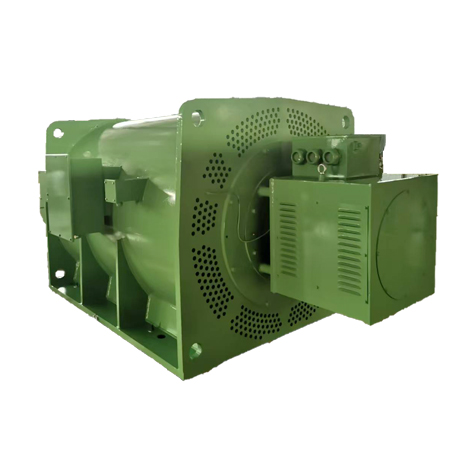Slip ring motors, also known as wound rotor motors, are the core of many high-power transmission applications. They are widely used in raw material industries such as mining, mineral raw material industries or adhesive industries like cement, limestone, and gypsum in various crushing, roller pressing, and grinding processes. They are also applied in large fans, pumps, and conveyors.
The stator:
The stator structure of squirrel-cage motors and slip-ring motors is the same. The main difference of slip-ring induction motors lies in the rotor structure and operation mode. When slip-ring motors are used in cascade systems, some changes in the stator may be encountered because the power supply of the motor comes from the power control of the rotor of another slip-ring motor, where external resistors are installed on its rotor.
Rotor:
What is the slip ring? The slip ring motor usually has a rotor with phase-wound stator. This type of rotor has a three-phase double-layer distributed winding, which is composed of the coils used in the AC generator. The rotor core is made of steel laminations and has slots to accommodate the formed three-phase single-phase windings. These windings are electrically separated by 120 degrees. Even if the stator is wound in two phases, the number of stator windings wound on the rotor is the same as the number in the stator and is always three-phase. These three windings are led out from the other end inside and connected to three insulated slip rings installed on the rotor shaft itself. The three terminals contact these three slip rings with the help of carbon brushes, which are fixed on the rings by spring components. These three carbon brushes are further connected externally to the three-phase starting connection rheostat. The slip ring and the external rheostat can increase the external resistance of the rotor circuit, making it have a higher resistance during startup, thereby increasing the starting torque. Under normal operating conditions, the slip ring automatically completes the circuit through the metal sleeve ring. The metal sleeve ring is pushed along the shaft, causing the three rings to contact each other. In addition, the brushes automatically lift from the slip ring to avoid friction losses and wear. Under normal operating conditions, the function of the slip ring rotor is the same as that of the squirrel-cage rotor.
What will happen if an external resistor is added? In the case of squirrel-cage induction motors, the rotor resistance is very low, so the current in the rotor is very high, which makes the starting torque worse. However, if an external resistor is added in the case of slip-ring motors, the rotor resistance is increased at startup, so the rotor current is low and the starting torque is maximum. Moreover, the slip required to generate the maximum torque is proportional to the rotor resistance. In slip-ring motors, by increasing the external resistor to increase the rotor resistance, the slip increases. Due to the high rotor resistance, the slip is greater, so even at low speeds, “pull-out” torque can be achieved. When the motor reaches its basic speed (full rated speed), when the external resistor is removed and under normal operating conditions, its operation mode is the same as that of squirrel-cage induction motors. Therefore, these motors are most suitable for very high inertia loads, which require almost zero pull-out torque at low speeds and acceleration to full speed, and absorb the minimum current in a very short time.
Advantages of slip-ring induction motors:
The main advantage of slip-ring induction motors is that they can be easily controlled in speed. Even at zero speed, “pull-out torque” can be achieved. Compared with squirrel-cage induction motors, it has a higher starting torque. The full-load torque is approximately 200-250% of the full-load torque. Squirrel-cage induction motors account for 600-700% of the full-load current, but the starting current of slip-ring induction motors is very low, approximately 250-350% of the full-load current.
Post time: Apr-09-2025

